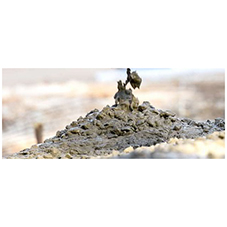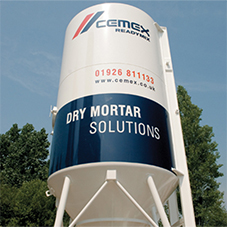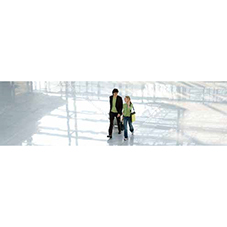Andy Nevitt, a screed flooring expert from CEMEX UK, the leading building materials provider, talks about what architects, developers and self builders need to know when choosing screeds to use over underfloor heating systems.
Underfloor heating systems have steadily grown in popularity with homeowners over the past decade with the underfloor heating trade association UHMA recording system installation numbers increasing year on year. Once reserved only for bigger developments such as hospitals and schools there has been a growing trend in recent years for house builders and developers to install underfloor systems as a first choice in new homes. They are easy and cost effective to install and can save the homeowner up to 30% on fuel bills compared to traditional hot water systems using radiators.
However, despite its obvious benefits, there are many factors that need to be considered even before deciding to opt for an underfloor heating system. One of the most important decisions is the material which would cover the system and will optimise the effectiveness of the system once installed.
Considerations
Screed has been identified as a perfect partner for underfloor system applications. It encapsulates the under floor heating elements and diffuses the heat across the floor surface providing an even temperature in the room.
Before any architect or contractor specifies or installs an underfloor heating system, it is imperative that they understand which screed is best to use in a given situation and recognise the different methods of floor construction during the design stage.
The contractor should also consider different thickness requirements associated with specific screed types, how much room they have to lay the screed and how the floor will be insulated.
Laying screed
It is vital to install the screed as early as possible in the construction process as the curing and drying of the product is critical to its long term performance. The screed must be laid after the roof; window and external doors have already been installed to protect it from the elements of rain, wind and sun as this can have a detrimental effect on the product. It also ensures a more consistent environment for the initial curing. Once the screed has been laid, and depending on whether a self compacting or traditional mix is used, it is essential the product has been left to cure before it is dried.
Traditional v Flowing screeds
The type of screed used will depend on the type of application. The industry has tended to use a traditional Portland cement-based screed as opposed to the flowing variety which has a calcium sulfate binder.
Over recent years architects and contractors have come to realise the benefits of using a flowing screed application compared to the traditional mix as they experience an improved end performance and cost savings.
Flowing Screeds
Combining underfloor heating with flowing screeds offers significant benefits. However, it is essential that the heating system specified has been designed for use with flowing screeds.
Reduced screed thickness: the properties of a flowing screed mean that it can be laid at approximately half the thickness, around 50mm overall thickness compared to 90mm for sand/cement screed. This results in less material but a stronger, more consistent quality and a neater finish.
Quicker application: flowing screed can be laid at a faster rate than a sand /cement screed due to the thinner application and accuracy of placement. A flowing screed will move around the pipe system giving void-free intimate contact that would be difficult to achieve using a sand/cement screed.
Evenness of heat: The close contact of the screed with the heating system allows heat to spread evenly and reach an optimum temperature quicker. Conversely when the heating is switched off, the screed also cools much quicker. The heating system is therefore more responsive and has improved energy efficiency compared to systems using traditional sand/cement screeds.
Time savings: Reduced curing times and its speed and efficiency of application means contractors can shave weeks off a project. Its ability to dry and cure quicker means the area is available sooner to other trades to continue working.
Finish: As flowing screed is self-compacting it also provides a smoother finish and there is also minimal lateral shrinkage because of the calcium sulfate binder.
Traditional Screeds
Traditional screed products should not be forgotten and there are some situations where they are preferable - the construction of wet rooms, commercial kitchens and shower areas are better suited to traditional mixes due to the continual contact with water and then drying out. The physical make-up of flowing screed means a constant contact with water could gradually debond and degrade it.
Finishing Touches
Finally, when the screed has been laid and dried it is best practice to prime or seal the top of the screed before a finish like tile or marble is applied as this will increase the effectiveness and preserve longevity of the screed.
View Mortars Product Entry






